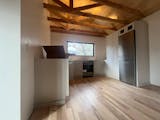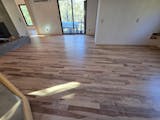Best Wood for Flooring
Since the 17th century, people have admired the beauty and appreciated the durability of hardwood floors. In the early years, they were the symbol of great wealth, royalty and nobility. Through the years, hardwood flooring gained popularity among the common people for its strength and endurance. Hardwood flooring is a natural work of art with unique grain patterns, colors and textures, which are exclusive to each species of wood. Each one of a kind piece of hardwood displays nature’s magnificence and handiwork. To assist you in choosing the ideal flooring for you, it is important to know some information about each species of hardwood. For your convenience, the various species of hardwood that are used for flooring are listed below in alphabetical order.
Alder
Alder is versatile in that it can be stained to the color of practically any species of wood, due to being light in color, absorbing stain well and its grain being fine and smooth. Therefore, it can be stained to look like a more expensive hardwood, without having to pay the price of the more expensive wood. Alder’s Janka Hardness rating is 590, making it one of the softer hardwoods used for flooring. Alder’s natural color is a very light shade of brown, but it has a pink or yellow hue, making it a good selection if you have a shabby chic interior design. Alder is also eco-friendly because it reaches full maturity in less than 15 years, making it one of the fastest growing species.
Ash, White
White Ash is a favorite among many because of its unique knotty wood grain pattern that is similar to oak. Its natural colors include white, cream and very light tan. White Ash rates 1320 on the Janka Hardness scale, making it very strong, durable and shock resistant. It is an excellent choice for high traffic areas because of its resilience. It is from the same family as the olive tree, but without edible fruit.
Beech
Beech has the distinct characteristic of ranges in color from reddish brown for the wood that is older and darker at the center of the tree trunk to a creamy white for the outer wood of the tree trunk. These changes in color are exhibited in a tight grain with unique bands and spirals of color all through the hardwood. Beech has a consistent even surface and ranks high on the Janka Hardness scale with a score of 1300, making it a good choice for stability and sturdiness.
Birch
Although birch has a variety of species, the one used for manufacturing flooring is yellow birch. Yellow birch has a tight grain with lines or twisted or curvy grain patterns with visible color variations from cream to reddish brown. It can accommodate the darker stains like walnut or mahogany. Birch has a Janka Hardness rating of 1260 with a clear, precise grain pattern, making it one of the harder woods, just below red oak at 1290.
Bubinga
Bubinga has a distinct grain pattern and rustic look, with color variations in the lush, vivid reddish hue that has darker veins of red running through it. It is a remarkable hardwood that is native to Africa and has a very high Janka Hardness rating of 2690, which indicates that it is extremely hard, very resilient and can endure a lot of wear and tear in high traffic areas. Due to its strength and durability it can last a lifetime.
Cherry, American (also known as Black Cherry)
Cherry is a beautiful wood, which is sometimes referred to as fruitwood. It has an attractive reddish brown color and curvy grain patterns. It is native to the eastern United States and has a smooth surface that has a sheen and a luxurious appearance. American Cherry rates 950 on the Janka Hardness scale, indicating that it is a softer hardwood, but it is above average in dimensional stability with a rating of 7.1, which somewhat compensates for its softness.
Cherry, Brazilian (also known as Jatoba)
Brazilian cherry is a fine wood that is a favorite among many for its gorgeous medium reddish brown color with grains of a darker reddish hue running through it and a course texture and finish. Of course, it grows in Brazil and is extremely hard and remarkably durable and has an exceptionally high Janka Hardness rating of 2820, making it one of the hardest hardwoods that will endure heavy traffic for decades.
Cypress, Australian
Australian Cypress ranges from a light cream color to a honey gold color with contrasting dark colored knots and curvy streaks, giving it a beautiful rustic appearance, which favors pine. It has a Janka Hardness rating of 1375 and is very durable with excellent stability.
Hickory
Hickory is very rough when unfinished and is very similar to and compatible with pecan wood, which is in the same species. Suppliers consider it a replacement wood for pecan. It has a closed grain and can be a medium tan color to a light reddish brown color for the older and darker wood at the center of the tree called the heartwood and a creamy white for the outer wood of the tree called the sapwood. It has a pattern of thin curvy or straight lines and is rated 1820 on the Janka Hardness scale, making it very durable and long lasting for flooring.
Kempas
Kempas has a course grain texture and its heartwood (near the center of the tree) is an orange red to a reddish brown color with little contrasting color and its sapwood (near the outer part of the tree) is a pale yellow to white color with a coiled interlocking grain. It is rated 1710 on the Janka Hardness scale, but it rates low in stability.
Mahogany, Asian (also known as Keruing)
Dipterocarpus is a wood that is native to Southeast Asia that includes more than 70 different species of wood that are indistinguishable from each other and therefore, fall under the same category, which has been named Keruing. This wood offers a course grain texture, curved or straight, with colors ranging from a pinkish brown to a darker brown. It rates close to Red Oak on the Janka Hardness scale, with a rating of 1270, making it strong and durable.
Mahogany, Santos
Santos Mahogany is a vivid, dark reddish brown color with darker streaks. It has a somewhat oily texture and its grain can be curvy or straight with little contrast. It is native to South America and grows in tropical forests, with a high Janka Hardness rating of 2200, for its hardness, strength and durability.
Maple, Hard (also known as Sugar Maple)
Hard Maple or Sugar Maple is sold as a premium wood because of its rare detailing, one of which can resemble the shape of the body of a fiddle, with a medium grain. Its wood varies between a creamy white color to a light reddish brown color, throughout the tree, including its heartwood and sapwood. Hard Maple grows in North America and has an above average rating of 1450 on the Janka Hardness scale.
Merbau
Merbau is greatly valued for its intense radiant color of dark reddish brown or brown, that occasionally has light gold specks scattered through the wood, and the pattern of the grain curvy, intermingled or straight. Merbau hardwood trees grow in the countries of Malaysia, Indonesia, and Papua New Guinea. Merbau has a Janka Hardness rating of 1925, indicating that it is extremely hard, durable and stable.
Mesquite
Mesquite has a variety of unique color and tones, ranging from a light brown to a dark reddish brown color that has veins of mineral within it. Mesquite trees shed their leaves in the fall and are indigenous to Southern Mexico and the Midwestern and Southwestern United States. Mesquite has a high Janka Hardness rating of 2345, making it extremely hard and a very durable wood that is great for high traffic areas.
Oak, Red
Red Oak includes a large variety of more than 200 subspecies that are only distinguishable by their variety of colors. They grow in all areas of North America. The grain pattern is firm with an open grain and a coarse texture. The wood is a light reddish color throughout, showing minimal difference between the heartwood and sapwood color. When red oak hardwood is quarter sawn into lumber, it can have a chip pattern that is known as butterflies of tiger rays. Northern Red Oak has a Janka Hardness rating of 1290 and is slightly harder than Southern Red Oak, which has a Janka Hardness rating of 1060.
Oak, White
White Oak has an open grain with occasional knots and spirals. It has longer rays than Red Oak. Its wood is light brown with a slight pink or gray hue in the center of the tree or the heartwood, and a consistent light cream to white color in the outer wood of the tree or the sapwood. White Oak has a Janka hardness rating on 1210, which rates it just a little softer than the central rating on the Janka hardness scale.
Padauk
Padauk has a rough surface and an intertwined or straight grain. Its wood is an intense dark purplish or reddish brown or black, which is consistent throughout the heartwood and is considered an exotic hardwood. Padauk grows in West and Central Africa, has a Janka Hardness rating of 1725 and is exceptionally durable and structurally stable.
Pecan
Pecan wood is a type of hickory and suppliers consider it exchangeable with hickory wood. Pecan has an open grain with curvy or unwavering lines. Its heartwood color is reddish brown with darker brown striations and its sapwood is a pinkish white color. Pecan has a rating of 1820, which is higher the average, making it strong and durable.
Pine (also known as Southern Yellow)
Southern Yellow Pine has pale yellow to yellowish brown heartwood, which may have an orange hue and a yellowish white to light tan sapwood. Its grain is closed with knots and a noticeable unique grain pattern. The term Southern Yellow Pine includes several of the evergreen species, which are indigenous to southern areas of the United States. Southern Yellow Pine’s ratings fall below the mid range on the Janka Hardness scale, making it softer than average and the ratings vary according to the species, with scores between 690 and 870.
Pine, Heart
Heart Pine is wood that has been taken out of old building and recycled. Depending on how it is sawn, the grain pattern can be spiral or straight lines, similar to pinstripes and it is a dense wood with a lot of figuring. Its heartwood is reddish brown and its sapwood is light yellow with some black staining from sap. Heart pine has a Janka Hardness rating of 1225, which is middle range; although it’s structural stability varies, depending on the age, species and how the wood was previously used, prior to recycling.
Sapele
Sapele wood has a vivid, deep reddish brown color, interconnected fine grain and is considered an exotic hardwood. It is native to Africa and comparable to mahogany. It is structurally stable, more durable than mahogany and as strong and wear resistant as Oak. It rates 1500 on the Janka Hardness scale, which is above mid grade.
Teak, Brazilian (also known as Cumaru)
Brazilian Teak has an interconnected fine grain and its wood is a consistent light to medium brown, with a yellow hue and an oily texture. It is native to South America and is one of the hardest hardwood species available, with an incredibly high Janka Hardness rating of 3540, plus a high structural stability rating. Brazilian Teak has exceptional strength and durability, will endure a lot of wear and tear in high traffic areas and will last for generations to come.
Teak, True
True teak has a curvy or straight grain and a course surface, which is oily to the touch, with a dull sheen. Its wood is a medium golden brown, with dark brown striations. True Teak is grown in the tropical regions of Southeast Asia, Central America and some areas in South America. It is softer than most hardwoods with a low Janka Hardness rating range of 1000 to 1155.
Tigerwood
Tigerwood has a curvy or interconnected, asymmetrical grain, possibly speckled, and a fine surface with a medium to dull sheen. Its wood can range in color from a light cream color to an intense reddish orange tone in a vivid stripped pattern, which accounts for its name. Tigerwood is native to the biogeographic region of Mexico, including Guatemala, Peru, Bolivia, and Brazil and grows naturally in the forests in these countries. It has a Janka Hardness rating of 1850, making it durable, stable and strong.
Walnut, American Black
American Black Walnut has an open grain and may have a spiral or knotted pattern. The heartwood color varies from a lush dark brown to black with a purple hue and there is a striking distinction between the white to light tan sapwood and the heartwood. Frequently, hardwood flooring manufacturers will steam the wood to bleed the heartwood color into the sapwood to darken it. American Black Walnut is native to North America and softer than Red Oak with a rating of 1010 on the Janka Hardness scale.
Walnut, Brazilian (also known as Ipe)
Brazilian Walnut or Ipe (pronounced e-pay) can have a curvy, asymmetrical or straight grain which ranges from fine to medium. Its wood is dense and heavy, with an oily texture. Brazilian walnut is a medium to very dark brownish black with minor deviations in color. It is native to South America, rating the highest score of 3680 on the Janka Hardness scale, with a higher than average dimensional stability, indicating that Ipe is exceptionally the hardest hardwood, with the greatest durability and resilience available today.
Wenge
Wenge is the term used for wood from the Millettia laurentii tree, which is native to Africa. It has a rough, oily surface with a straight grain, and the heartwood is a lush, dark brown color, with thick streaks of a nearly black color and a drastically opposite sapwood color of a very light yellowish white. Wenge has a Janka Hardness rating of 1630, which is higher than average, but has tremendous structural stability, making it very strong, durable, and long lasting flooring.
At Woodwudy Wholesale Flooring, we are here for you! If you need any assistance or additional information, please call our trained flooring specialists at 1-877-966-3983.


































